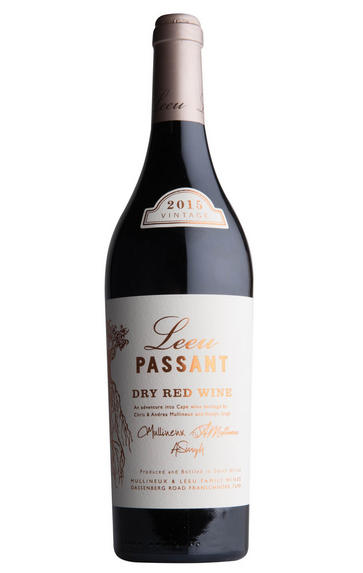
2015 Mullineux & Leeu Family Wines, Leeu Passant, Dry Red Wine, Western Cape, South Africa
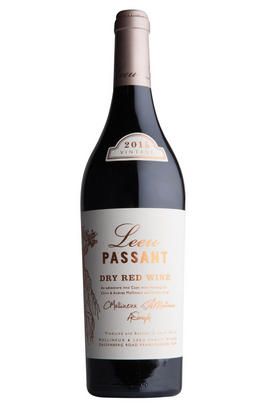
About this WINE
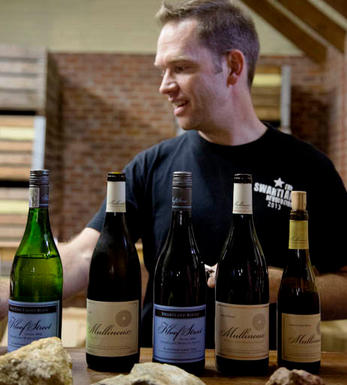
Mullineux & Leeu Family Wines
Mullineux & Leeu Family Wines is one of the stand-out producers in South Africa's budding Swartland region. Winemakers Chris and Andrea Mullineux’s ambition is to bottle wines that are a true expression of the Swartland, and all steps of their winemaking process are taken with this in mind. They work closely with a select group of growers who follow sustainable, reasoned farming practices, as well as owning vineyards at their Roundstone Farm in Riebeeksrivier.
In the cellar, apart from minimal amounts of sulphur, nothing is added to or removed from the wine. They do not make use of any yeasts, acids, tannins, enzymes, or fining and filtering agents. “Leeu” (Afrikaans for “lion”) was added to the name recently to recognise the contribution of a new investor to the project.
Apart from their wonderful Syrah, Chenin Blanc-based white blend and a super-rich Straw Wine made from air-dried Chenin Blanc, fermented and matured in old barriques, Mullineux now has a range of spectacular single-terroir Syrah and Chenin Blanc wines, each of which illustrates the amazing potential of the differing Swartland soils. Volumes of the single-vineyard wines are tiny, so availability is extremely limited.
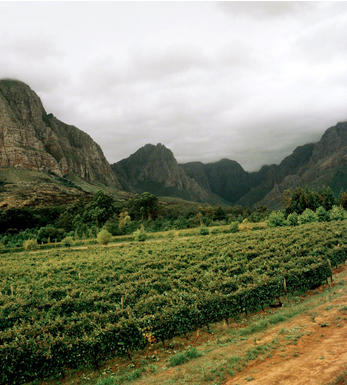
Swartland
After Stellenbosch, the west coast district of Swartland (25 miles due north of Cape Town, between the towns of Malmesbury and Piketberg) now ranks as the Cape's most exciting wine-producing district.
Settled initially by nomadic Khoikhoi from Namibia, the Dutch brought trade and vines to the region in the 17th century. Viticulture was developed only more recently.This contrasts with an ancient geology which has brought a mix of shale, arenite sandstone and granite soils air-conditioned by the Atlantic Ocean nearby.
Chenin Blanc and Shiraz seem to do best, as exemplified by the wines of Eben Sadie and Mullineux.
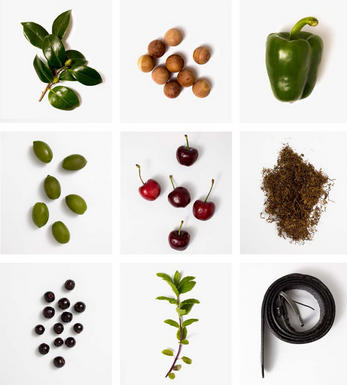
Cabernet Sauvignon
The most famous red wine grape in the world and one of the most widely planted.
It is adaptable to a wide range of soils, although it performs particularly well on well-drained, low-fertile soils. It has small, dusty, black-blue berries with thick skins that produce deeply coloured, full-bodied wines with notable tannins. Its spiritual home is the Médoc and Graves regions of Bordeaux where it thrives on the well-drained gravel-rich soils producing tannic wines with piercing blackcurrant fruits that develop complex cedarwood and cigar box nuances when fully mature.
The grape is widely planted in California where Cabernet Sauvignon based wines are distinguished by their rich mixture of cassis, mint, eucalyptus and vanilla oak. It is planted across Australia and with particular success in Coonawarra where it is suited to the famed Terra Rossa soil. In Italy barrique aged Cabernet Sauvignon is a key component in Super Tuscans such as Tignanello and Sassicaia, either on its own or as part of a blend with Sangiovese.


Buying options
Add to wishlist
Description
Since starting the estate in 2007, Chris and Andrea Mullineux have earned a reputation for producing wines of fine quality. Based in the Swartland, they work predominately with Chenin Blanc and Syrah from old vines. This wine is the first vintage from a sister range of wines, under the Leeu Passant label. The Dry Red is their take on 1950s and ’60s Cape blends, using old-vine fruit from heritage vineyards in Wellington, Franschhoek and Stellenbosch. Deep ruby in colour, the aromas nod towards pepper and spice, with green herbs, ripe plum and black cherry. The palate is opulent with plenty of fruit, a vein of chalky minerality and impressive ripeness. It still manages to display an air of restraint and control that highlight the wine’s impeccable pedigree. Drink now to 2022.
wine at a glance
Delivery and quality guarantee